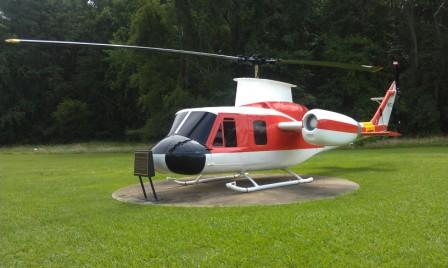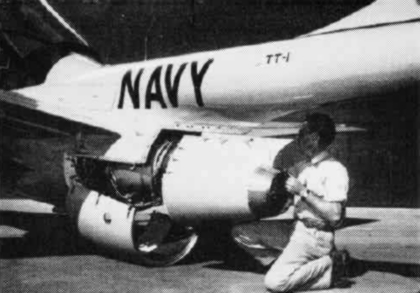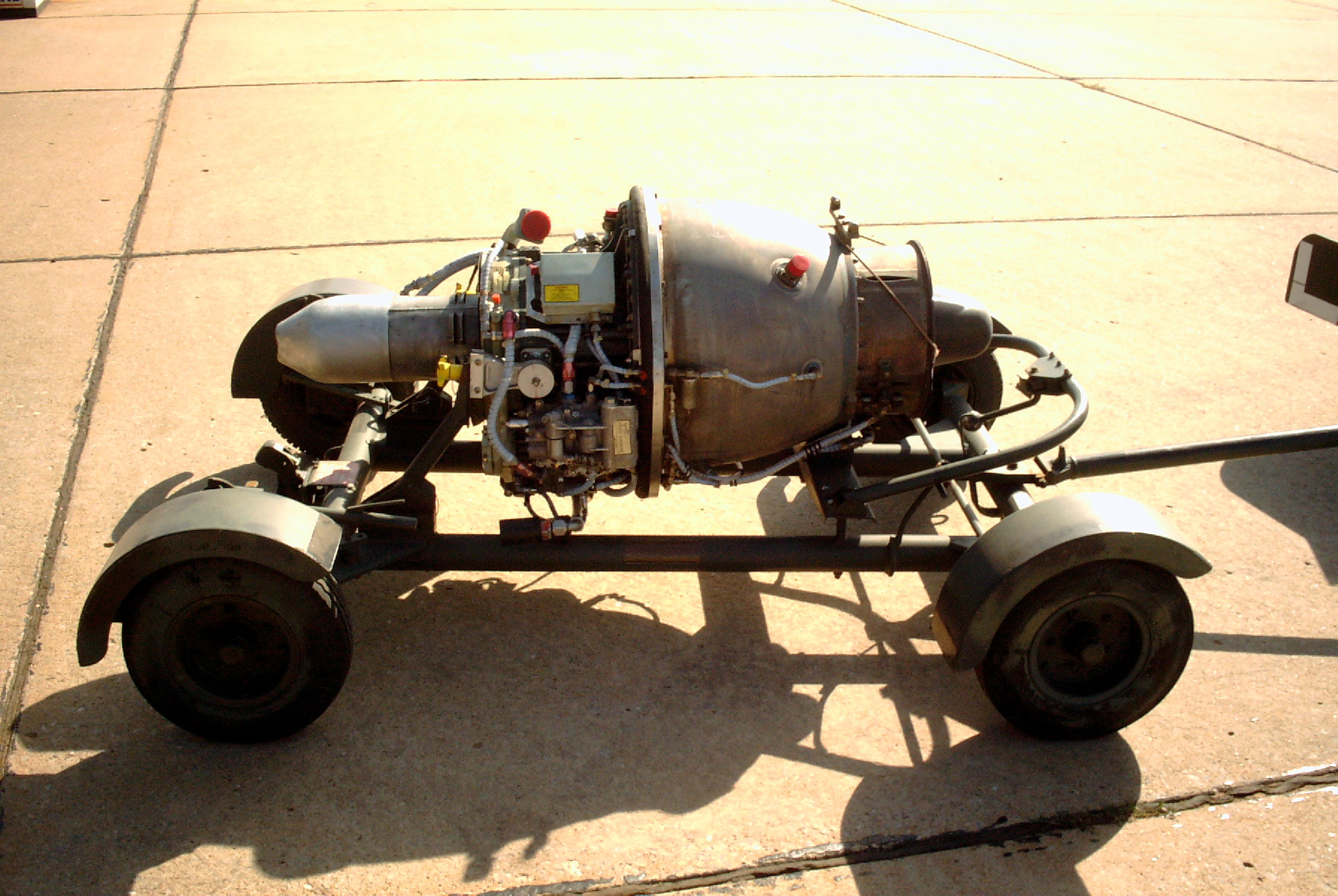|
Bell 533
The Bell 533 was a research helicopter built by Bell Helicopter under contract with the United States Army during the 1960s, to explore the limits and conditions experienced by helicopter rotors at high airspeeds. The helicopter was a YH-40—a preproduction version of the UH-1 Iroquois—modified and tested in several helicopter and compound helicopter configurations. The Bell 533 was referred to as the ''High Performance Helicopter'' (HPH) by the Army, and reached a top speed of in 1969, before being retired. Design and development The U.S. Army began a program to study improvements to current helicopters that could be demonstrated by testing. Analyses by three helicopter companies showed that performance could be greatly improved. Bell Helicopter was one of the participants and investigated improvements to the UH-1B Iroquois. After the study, Bell submitted a proposal for the ''High Performance Helicopter''. On 7 August 1961, the Army's Transportation Research and Enginee ... [...More Info...] [...Related Items...] OR: [Wikipedia] [Google] [Baidu] |
Bell Helicopter
Bell Textron Inc. is an American aerospace manufacturer headquartered in Fort Worth, Texas. A subsidiary of Textron, Bell manufactures military rotorcraft at facilities in Fort Worth, and Amarillo, Texas, as well as commercial helicopters in Mirabel, Quebec, Canada. History Bell Aircraft The company was founded on July 10, 1935, as Bell Aircraft Corporation by Lawrence Dale Bell in Buffalo, New York. The company focused on the designing and building of fighter aircraft. Their first fighters were the XFM-1 Airacuda, a twin-engine fighter for attacking bombers, and the P-39 Airacobra. The P-59 Airacomet, the first American jet fighter, the P-63 Kingcobra, the successor to the P-39, and the Bell X-1 were also Bell products.History of Bell Helicopter . bellhelicopter.com [...More Info...] [...Related Items...] OR: [Wikipedia] [Google] [Baidu] |
Fort Worth, Texas
Fort Worth is the fifth-largest city in the U.S. state of Texas and the 13th-largest city in the United States. It is the county seat of Tarrant County, covering nearly into four other counties: Denton, Johnson, Parker, and Wise. According to a 2022 United States census estimate, Fort Worth's population was 958,692. Fort Worth is the city in the Dallas–Fort Worth–Arlington metropolitan area, which is the fourth most populous metropolitan area in the United States. The city of Fort Worth was established in 1849 as an army outpost on a bluff overlooking the Trinity River. Fort Worth has historically been a center of the Texas Longhorn cattle trade. It still embraces its Western heritage and traditional architecture and design. is the first ship of the United States Navy named after the city. Nearby Dallas has held a population majority as long as records have been kept, yet Fort Worth has become one of the fastest-growing cities in the United States at the beginning ... [...More Info...] [...Related Items...] OR: [Wikipedia] [Google] [Baidu] |
Bell 533a
A bell is a directly struck idiophone percussion instrument. Most bells have the shape of a hollow cup that when struck vibrates in a single strong strike tone, with its sides forming an efficient resonator. The strike may be made by an internal "clapper" or "uvula", an external hammer, or—in small bells—by a small loose sphere enclosed within the body of the bell (jingle bell). Bells are usually cast from bell metal (a type of bronze) for its resonant properties, but can also be made from other hard materials. This depends on the function. Some small bells such as ornamental bells or cowbells can be made from cast or pressed metal, glass or ceramic, but large bells such as a church, clock and tower bells are normally cast from bell metal. Bells intended to be heard over a wide area can range from a single bell hung in a turret or bell-gable, to a musical ensemble such as an English ring of bells, a carillon or a Russian zvon which are tuned to a common scale and installe ... [...More Info...] [...Related Items...] OR: [Wikipedia] [Google] [Baidu] |
Helicopter
A helicopter is a type of rotorcraft in which lift and thrust are supplied by horizontally spinning rotors. This allows the helicopter to take off and land vertically, to hover, and to fly forward, backward and laterally. These attributes allow helicopters to be used in congested or isolated areas where fixed-wing aircraft and many forms of STOL (Short TakeOff and Landing) or STOVL (Short TakeOff and Vertical Landing) aircraft cannot perform without a runway. In 1942, the Sikorsky R-4 became the first helicopter to reach full-scale production.Munson 1968.Hirschberg, Michael J. and David K. Dailey"Sikorsky". ''US and Russian Helicopter Development in the 20th Century'', American Helicopter Society, International. 7 July 2000. Although most earlier designs used more than one main rotor, the configuration of a single main rotor accompanied by a vertical anti-torque tail rotor (i.e. unicopter, not to be confused with the single-blade monocopter) has become the most comm ... [...More Info...] [...Related Items...] OR: [Wikipedia] [Google] [Baidu] |
Pratt & Whitney JT12
The Pratt & Whitney JT12, (US military designation J60) is a small turbojet engine. The Pratt & Whitney T73 (Pratt & Whitney JFTD12) is a related turboshaft engine. Design and development The J60 conception and project design began in July 1957 at United Aircraft of Canada (now Pratt & Whitney Canada) in Montreal. The project design details were transferred to the main P&W company in East Hartford and in May 1958, the first prototype, with military designation YJ60-P-1 commenced testing. Flight tests were completed in early 1959; followed by the delivery of the new JT12A-5 engines in July 1959. These were for the two Canadair CL-41 prototype trainers with a rating of 12.9 kN (2,900 lb st). The modified JT12A-3 turbojets with a basic rating of 14.69 kN (3,300 lb st) were tested in the two Lockheed XV-4A Hummingbird VTOL research aircraft. The next version, JT12A-21, had an afterburner which delivered a maximum thrust of 17.91 kN (4,025 lb st). Varian ... [...More Info...] [...Related Items...] OR: [Wikipedia] [Google] [Baidu] |
Pratt & Whitney
Pratt & Whitney is an American aerospace manufacturer with global service operations. It is a subsidiary of Raytheon Technologies. Pratt & Whitney's aircraft engines are widely used in both civil aviation (especially airlines) and military aviation. Its headquarters are in East Hartford, Connecticut.Contact Us ." Pratt & Whitney. Retrieved on January 7, 2011. "Corporate Headquarters Pratt & Whitney 400 Main Street East Hartford, CT 06108." As one of the "big three" aero-engine manufacturers, it competes with and , although it has also formed joint ventures with both ... [...More Info...] [...Related Items...] OR: [Wikipedia] [Google] [Baidu] |
Turbojet
The turbojet is an airbreathing jet engine which is typically used in aircraft. It consists of a gas turbine with a propelling nozzle. The gas turbine has an air inlet which includes inlet guide vanes, a compressor, a combustion chamber, and a turbine (that drives the compressor). The compressed air from the compressor is heated by burning fuel in the combustion chamber and then allowed to expand through the turbine. The turbine exhaust is then expanded in the propelling nozzle where it is accelerated to high speed to provide thrust. Two engineers, Frank Whittle in the United Kingdom and Hans von Ohain in Germany, developed the concept independently into practical engines during the late 1930s. Turbojets have poor efficiency at low vehicle speeds, which limits their usefulness in vehicles other than aircraft. Turbojet engines have been used in isolated cases to power vehicles other than aircraft, typically for attempts on land speed records. Where vehicles are "turbine-powere ... [...More Info...] [...Related Items...] OR: [Wikipedia] [Google] [Baidu] |
Teledyne CAE J69
The Teledyne CAE J69 was a small turbojet engine originally produced by Continental Aviation and Engineering (CAE) under license from Turbomeca. The J69 was a development of the Turbomeca Marboré II. It powered a number of U.S. drones, missiles and small aircraft. The engine was later produced by Teledyne CAE. The J69 was also developed into the Teledyne CAE J100 turbojet optimized for operation at higher altitudes. Variants ''Data from:''Aircraft engines of the World 1957 ;J69-T-1: (Marboré I) at 23,000 rpm. ;J69-T-3: at 22,500 rpm for take-off. ;J69-T-6: ;J69-T-9: ;J69-T-17: ;J69-T-19: ;J69-T-19A: ;J69-T-19B: ;J69-T-23: ;J69-T-25: ;J69-T-27: ;J69-T-29: ;J69-T-31: ;J69-T-33: ;J69-T-39: ;J69-T-41: ;J69-T-41A: ;J69-T-406: ;J100-CA-100: thrust ;CJ69-1025: ;CJ69-1400: lb thrust ;Model 352: ;Model 352A: ;Model 352-5a: (CJ69-T-1025) thrust ;Model 354-12: (J69-T-27) thrust ;Model 356-7A: (J69-T-29) thrust ;Model 356-7D: (J69-T-29) thrust ;Model 356-8: (J69-T-31) thrust ;Mo ... [...More Info...] [...Related Items...] OR: [Wikipedia] [Google] [Baidu] |
Teledyne CAE
Teledyne Turbine Engines (TTE) is a turbine engine manufacturer located in Toledo, Ohio. A division of Teledyne Technologies Inc., TTE is the successor to the former Teledyne CAE. History In 1940, Continental Motors Corporation formed Continental Aviation and Engineering (CAE) to develop and produce aircraft engines of over 500 hp. It begins development of turbine engines during the 1940s, but none entered production. From the 1950s-1970s, CAE built a licensed version of the Turbomeca Marboré as the Teledyne CAE J69. In 1969, Teledyne Incorporated acquired Continental Motors Corporation, which became Teledyne Continental Motors (TCM). CAE was renamed Teledyne CAE, headquartered in Toledo, Ohio.Gunston, p. 225 After the 1999 sale of Teledyne Ryan Aeronautical to Northrop Grumman, and the subsequent spin-off of Teledyne Technologies Inc. by Allegheny Teledyne in November that year, Teledyne CAE was renamed Teledyne Turbine Engines. In the next decade, it was placed und ... [...More Info...] [...Related Items...] OR: [Wikipedia] [Google] [Baidu] |
Autorotation (helicopter)
Autorotation is a state of flight in which the main rotor system of a helicopter or other rotary-wing aircraft turns by the action of air moving up through the rotor, as with an autogyro, rather than engine power driving the rotor. Bensen, Igor.How they fly – Bensen explains all" ''Gyrocopters UK''. Accessed: 10 April 2014. Quote: "air.. (is) deflected downward"Charnov, Bruce HCierva, Pitcairn and the Legacy of Rotary-Wing Flight ''Hofstra University''. Accessed: 22 November 2011. The term ''autorotation'' dates to a period of early helicopter development between 1915 and 1920, and refers to the rotors turning without the engine."Autorotation", ''Dictionary.com Unabridged (v 1.1)''. Random House, Inc. 17 April 2007 It is analogous to the |
Helicopter Flight Controls
A helicopter pilot manipulates the helicopter flight controls to achieve and maintain controlled aerodynamic flight. Changes to the aircraft flight control system transmit mechanically to the rotor, producing aerodynamic effects on the rotor blades that make the helicopter move in a deliberate way. To tilt forward and back (pitch) or sideways (roll) requires that the controls alter the angle of attack of the main rotor blades ''cyclically'' during rotation, creating differing amounts of lift (force) at different points in the cycle. To increase or decrease overall lift requires that the controls alter the angle of attack for all blades ''collectively'' by equal amounts at the same time, resulting in ascent, descent, acceleration and deceleration. A typical helicopter has three flight control inputs—the cyclic stick, the collective lever, and the anti-torque pedals. Depending on the complexity of the helicopter, the cyclic and collective may be linked together by a ''mixing uni ... [...More Info...] [...Related Items...] OR: [Wikipedia] [Google] [Baidu] |
Bell 533 Wings Only
A bell is a directly struck idiophone percussion instrument. Most bells have the shape of a hollow cup that when struck vibrates in a single strong strike tone, with its sides forming an efficient resonator. The strike may be made by an internal "clapper" or "uvula", an external hammer, or—in small bells—by a small loose sphere enclosed within the body of the bell (jingle bell). Bells are usually cast from bell metal (a type of bronze) for its resonant properties, but can also be made from other hard materials. This depends on the function. Some small bells such as ornamental bells or cowbells can be made from cast or pressed metal, glass or ceramic, but large bells such as a church, clock and tower bells are normally cast from bell metal. Bells intended to be heard over a wide area can range from a single bell hung in a turret or bell-gable, to a musical ensemble such as an English ring of bells, a carillon or a Russian zvon which are tuned to a common scale and installe ... [...More Info...] [...Related Items...] OR: [Wikipedia] [Google] [Baidu] |








